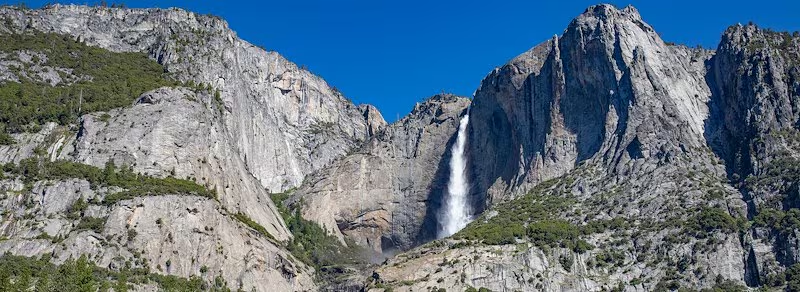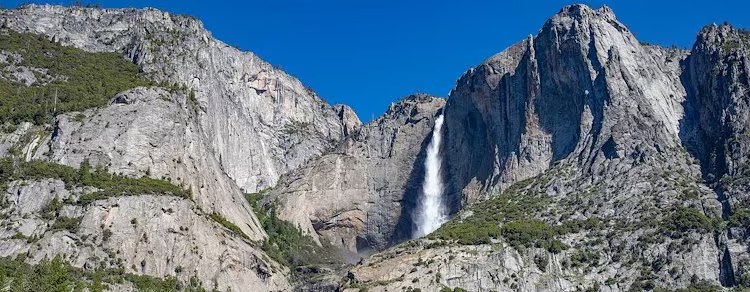
Nestled in the heart of the Sierra Nevada mountains of California, Yosemite National Park stands as a cathedral of natural wonders — a sanctuary where granite cliffs rise like giants, waterfalls thunder down canyon walls, and wildlife roams freely in pristine wilderness. As one of America’s most beloved and iconic national parks, Yosemite offers more than just scenic beauty; it delivers a profound connection to nature, from the awe of seeing El Capitan at sunrise to the quiet thrill of spotting a black bear in the forest.
Spanning over 750,000 acres, Yosemite is home to ancient sequoia groves, alpine meadows, glacial valleys, and over 400 species of wildlife. Whether you’re a seasoned mountaineer, a casual hiker, or simply a traveler in search of nature’s grandeur, Yosemite’s dramatic cliffs, cascading waterfalls, and wild encounters provide a journey into Earth’s raw, untouched beauty.
The Majesty Of Granite Giants: Cliffs That Touch The Sky
One of the most unforgettable elements of Yosemite’s landscape is its towering granite formations, carved over millennia by glaciers, uplift, and erosion. These monumental cliffs not only define the park’s skyline but also captivate the imagination of millions each year.
El Capitan: The Icon Of Vertical Stone
Perhaps the most legendary of all is El Capitan, a sheer, 3,000-foot monolith that soars above Yosemite Valley. Revered by rock climbers as one of the most challenging ascents in the world, El Capitan attracts daredevils and spectators alike. In recent years, climbers like Alex Honnold, who scaled the face without ropes in the documentary Free Solo, have turned this granite wall into a symbol of human daring and endurance.
From the El Capitan Meadow, visitors can look up in wonder, spotting climbers as tiny dots against the vertical expanse. At sunset, the rock glows gold and orange, a moment of natural theater that feels almost sacred.
Half Dome: A Testament To Nature’s Sculpting Power
Another icon, Half Dome, rises 8,839 feet above sea level, its rounded peak and sheer face giving it the appearance of a dome sliced in half. The challenging Half Dome hike is a rite of passage for many adventurers, culminating in a final ascent aided by steel cables. The view from the top, offering panoramic sights of the valley and beyond, is a hard-earned reward.
Even from the valley floor, Half Dome commands reverence. Its profile is visible from various viewpoints, including Glacier Point, where visitors can admire the full breadth of Yosemite’s geological artistry.
Waterfalls That Dazzle And Roar
Yosemite is also celebrated for its plunging waterfalls, which swell with snowmelt in the spring and early summer, creating a spectacular display of power and grace. These falls are not just scenery — they are living, breathing elements of the park’s ecosystem and soul.
Yosemite Falls: The Tallest In North America
No visit is complete without witnessing Yosemite Falls, the tallest waterfall in North America, with a total drop of 2,425 feet. Comprising Upper Yosemite Fall, Middle Cascades, and Lower Yosemite Fall, it can be viewed from multiple vantage points throughout the valley. The Lower Falls Trail is an easy, wheelchair-accessible path that brings visitors up close to the base, where the spray cools your skin and the sound is thunderous.
In spring, the falls thunder with force; in late summer, they slow to a graceful trickle, each phase offering a different type of beauty.
Bridalveil Fall: A Misty Welcome To The Valley
As you enter Yosemite Valley, you’re often greeted by the elegant Bridalveil Fall, which plunges 620 feet and creates a veil-like mist that sways in the wind. According to Native American lore, the mist of Bridalveil bestows good fortune on those who walk through it.
The short trail to the base offers a quick yet mesmerizing experience, and the fall is one of the most photogenic spots in the park — especially during the golden hour.
Vernal And Nevada Falls: The Mist Trail Adventure
For a more immersive and vigorous experience, the Mist Trail leads hikers past two breathtaking waterfalls: Vernal Fall (317 feet) and Nevada Fall (594 feet). True to its name, the trail often leaves hikers drenched in mist as they climb stone steps beside the roaring cascades. Rainbows form in the mist, and the sense of being embedded in the waterfall’s power is both humbling and exhilarating.
Face-To-Face With Yosemite’s Wild Inhabitants
Beyond the rocks and water, Yosemite is alive with wildlife encounters that add magic and unpredictability to every visit. From soaring raptors to curious deer and elusive bobcats, the park is a haven for creatures great and small. But perhaps the most iconic — and often most misunderstood — is the American black bear.
Bear Country: Myth, Mystery, And Respect
Yosemite’s black bears are not aggressive by nature, but they are clever and resourceful. They have learned to associate humans with food, making bear safety a critical component of park stewardship. All visitors are urged to store food in bear-proof lockers and to never feed or approach wildlife.
Yet, seeing a bear from a respectful distance, wandering through a meadow or climbing a tree, is one of Yosemite’s most unforgettable moments. Park rangers often refer to these creatures as ambassadors of the wilderness — reminders that this land is shared with beings who call it home.
Other Wildlife Wonders
Beyond bears, Yosemite teems with life. Mule deer often graze in open fields, while coyotes roam silently in the early morning. Bird watchers delight in spotting Steller’s jays, peregrine falcons, and even bald eagles. Higher elevations are home to elusive species like the Sierra Nevada red fox and the bighorn sheep.
Photographers and nature lovers alike find endless inspiration in these sightings, each one a living thread in Yosemite’s vibrant ecological fabric.
Seasons In Yosemite: Ever-Changing Splendor
Each season brings its own flavor to Yosemite, transforming the park into four distinct landscapes throughout the year.
- Spring: Waterfalls are at their most powerful; wildflowers bloom; bear cubs emerge with their mothers.
- Summer: Hiking trails open up to high country; crowds increase; campgrounds fill with laughter and campfire stories.
- Fall: Aspen and dogwood trees turn gold and crimson; the air cools; the park quiets.
- Winter: Snow blankets Yosemite Valley; Badger Pass Ski Area opens; frozen waterfalls and icy rivers create a hushed, otherworldly scene.
Every visit — whether in flip-flops or snowshoes — offers a different lens through which to view the park’s timeless beauty.
Cultural Roots And Conservation Legacy
Yosemite is not only a place of nature; it is a place of deep human history and environmental stewardship.
The Ahwahneechee People
Long before it became a national park, Yosemite was home to the Ahwahneechee, a Native American people who lived harmoniously within the valley for centuries. Their spiritual connection to the land is reflected in the names and legends associated with many of Yosemite’s features. Efforts are underway to ensure that indigenous voices and stories remain an integral part of the Yosemite narrative.
John Muir And The Birth Of National Parks
It was Yosemite that inspired John Muir, the Scottish-American naturalist, to advocate for the preservation of wild lands. His writings and passion helped lead to the establishment of Yosemite National Park in 1890 and later influenced the creation of the National Park Service.
Muir once wrote, “The mountains are calling, and I must go” — a sentiment that continues to call millions to Yosemite every year.
How To Explore: Practical Travel Tips
To make the most of a Yosemite adventure, here are a few helpful tips:
- Start Early: Especially in summer, arriving early helps beat the crowds and ensures better parking.
- Use Shuttles: The free Yosemite Valley Shuttle is eco-friendly and reduces congestion.
- Camp Smart: Campsites book months in advance; plan accordingly and follow Leave No Trace principles.
- Stay Safe: Be bear-aware, stay on trails, and check weather or fire conditions regularly.
- Go Beyond The Valley: While Yosemite Valley is the most famous area, regions like Tuolumne Meadows, Mariposa Grove, and Glacier Point Road offer quieter, equally stunning experiences.
A Final Reflection: Yosemite’s Timeless Spell
Yosemite is not merely a destination—it is an experience that transcends photographs and guidebooks. It’s the chill of morning air as mist lifts off the Merced River. It’s the echo of a waterfall crashing in the distance. It’s the heartbeat you feel when you lock eyes with a wild animal and know you are only a guest in its world.
In Yosemite, the cliffs speak, the water sings, and the wild welcomes. It is a place to be humbled, to be inspired, and to remember that even in a fast-changing world, there are still places where nature reigns and awe is guaranteed.
So come and stand beneath the granite spires. Let the waterfalls baptize your senses. Watch the bears roam through golden meadows. In Yosemite, you don’t just see the wilderness—you become part of it.




